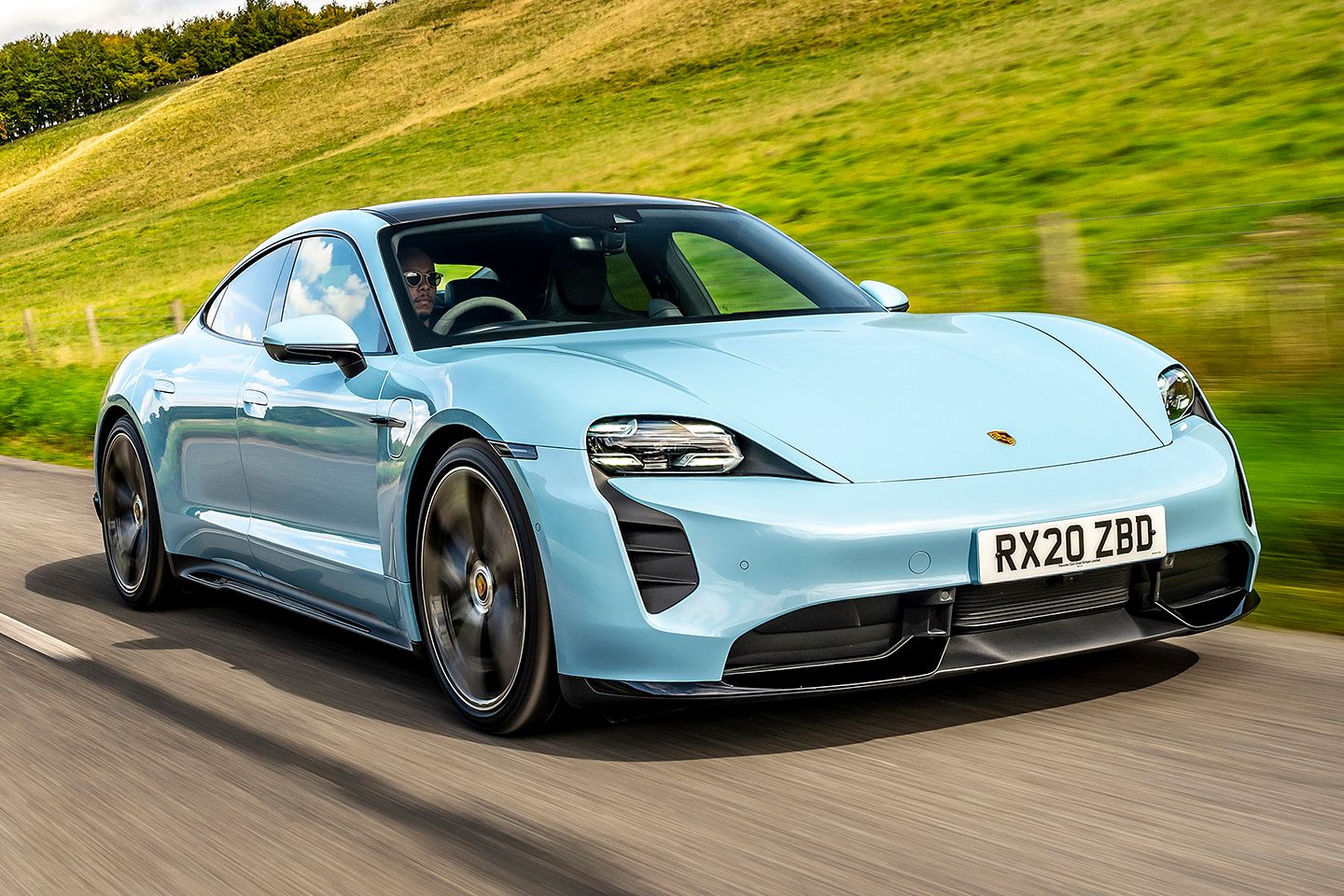
Key considerations
- Available for £50,000
- Twin electric motors, all-wheel drive on all models bar the entry-level one
- Plenty fast enough even in lower-powered models
- Brilliant chassis considering the weight
- Some issues, mostly electrical
- Big used choice but be prepared for depreciation, especially on range-toppers
As we all know, Porsche’s first all-electric vehicle was the Taycan. Except that it wasn’t. In 1898 Ferdinand Porsche designed the Egger-Lohner C.2 Phaeton, a 15mph car powered by a 3-5hp octagonal electric motor. In 1900 the 22mph Lohner-Porsche Electromobile was presented at the Paris Expo featuring Porsche’s newly-developed electric wheel hub motors.
In the same year the world’s first functional hybrid car, the Semper Vivus (‘Always Alive’), was unveiled. It used a combustion engine to drive a generator that supplied the wheel hub motor with energy, a drive system that should resonate with owners of BMW i3s at least. Porsche and Lohner’s rationale for using electricity as a car power source – to save the atmosphere from being ‘ruthlessly spoiled by the large number of petrol engines in use’ – will also sound familiar.
Unfortunately, the quickly discharging nature of late 19th century batteries plus the total absence of any charging infrastructure and the two-tonne weight of the Electromobile all conspired to consign electronic transport to the bin for the best part of a century. That was how long it took for lithium-ion batteries to arrive as a viable source of stored energy, and for governments to grind into action in regards to providing public charging facilities.
Electric vehicles still weigh two tonnes of course, but then so do a lot of modern internal combustion engined cars. That fact, plus the presence of a Porsche badge on the bonnet promising Porsche levels of performance, handling and quality, greatly eased the launch of the Taycan – once the initial outrage at a non-IC Porsche had died down anyway.
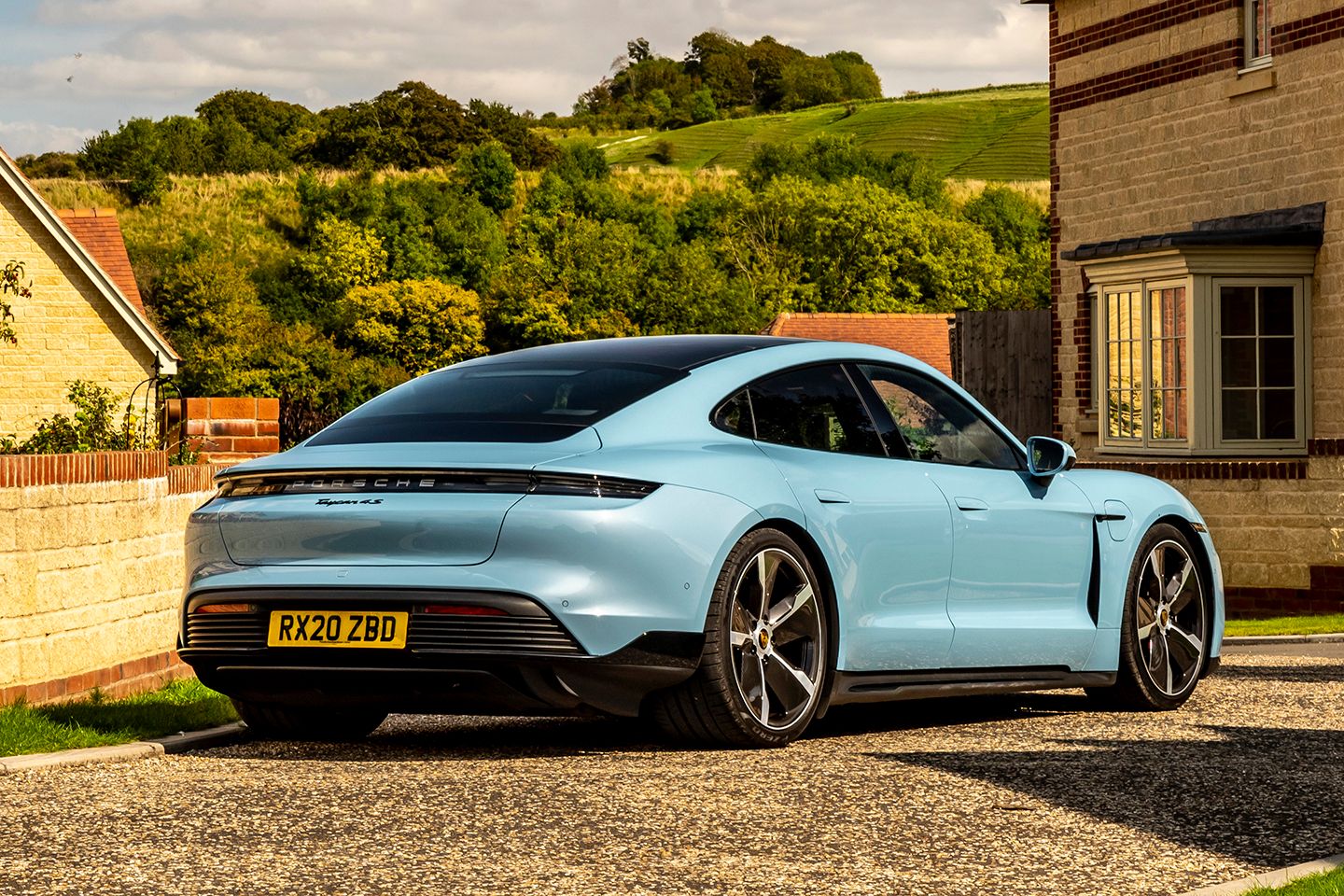
Unusually, the fastest models – the Turbo and Turbo S – were the first Taycans to be premiered in China, Canada and at the Frankfurt show in September 2019, more than a year after the first testing pics and videos had appeared with Mark Webber at the wheel. The lower-spec 4S was shown in October 2019 and launched in January 2020, with the ‘base’ Taycan model not coming out until March 2021. That one was rear-wheel drive only but it could be had on either a 300kW (402hp) platform or in Taycan+ spec with the 350kW (469hp) Performance Battery Plus.
The all-wheel drive 4S began life with 435hp (530hp on overboost) and 472lb ft and a WLTP combined range of between 230 and 282 miles. In 4S+ guise with the 93kWh Performance Battery Plus those numbers rose to 490hp (570hp on launch control-only overboost), 478lb ft and 267-318 miles. The range-topping Turbo S had 617hp (760hp on overboost), 772lb ft and a range of 273-290 miles by the WLTP combined test. It duffed up the 0-62mph run in 2.8 seconds, the same time as the 911 991 GT2 RS. Using ‘Turbo’ in the name of an electric car with no turbochargers raised a few eyebrows. Porsche said it was merely an established word for higher performance but it didn’t get across the fact to new Porsche customers that the Turbo S was four-wheel drive. ‘4S’ more clearly signified all-wheel drive and Porsche ’S’ performance.
The rough translation of Taycan was lively young horse and that seemed about right when Lars Kern hustled one (a Taycan, that is) around the Nürburgring in 7min 42sec in August 2019. That lap time put it between the Cayman GT4 and the 997 GT3 3.8, not bad for a four-door family car. It stopped well too, as this video of it accelerating to 90mph and then braking to a stop on the deck of an aircraft carrier attempted to show.
Road testers and buyers were impressed. By the end of 2021, the Taycan had won fifty awards, including World Luxury Car and World Performance Car, and had displaced the long-reigning Macan as the UK’s best-selling Porsche. At this time a GTS model was released to create the most sporty – as per Porsche tradition, not the most powerful but arguably the best to drive – Taycan in the range. It had the big battery as standard, giving it new outputs of 590hp/626lb ft, a 0-62mph of 3.7 seconds and a claimed range of 273-313 miles.
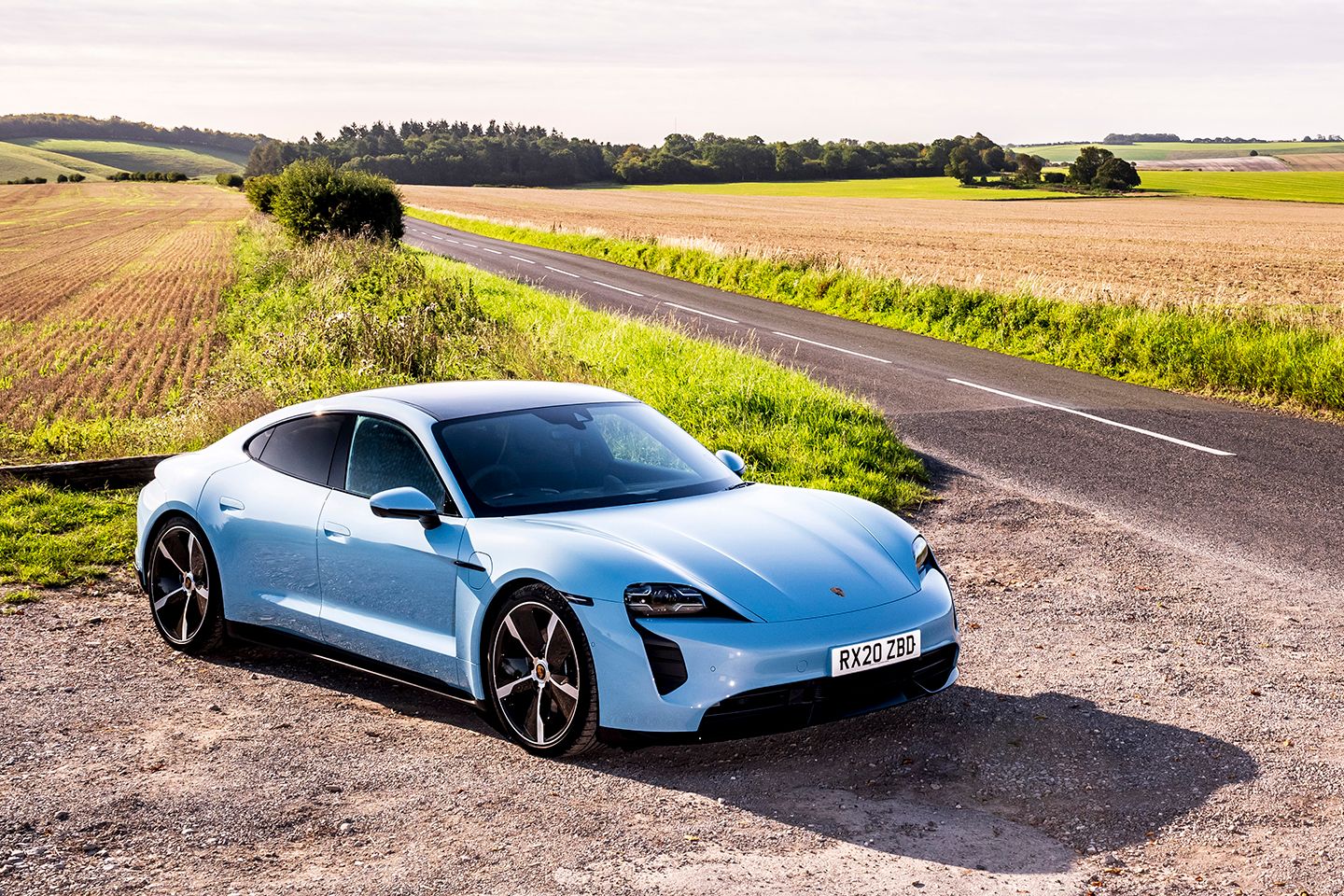
The GTS also had adaptive dampers, torque vectoring, bespoke suspension tuning, 20-inch wheels, blacked-out body bits and electric Sport Sound which created a much more noticeable hum and whirr. Its weight was nearer to 2.3 tonnes than the 4S’s 2.14 tonnes, but even so it lived up to the GTS sub-brand’s ‘range sweet spot’ image, especially with the all-wheel steering option fitted which put the cherry on top of an already fine combination of grip and stability. Prices for the GTS started at just over £104,000, nearly £20k more than the 4S, but the price hike was a fair reflection of its enhanced spec.
There are Sport Turismo and Cross Turismo Taycans but we’ll be concentrating on the straight 4S in this buyer’s guide, not only because it’s been around the longest, and would therefore (you’d think) be the one most likely to show up any ownership issues, but also because its spec and relative age make it the most financially accessible Taycan. New, a 2020 4S cost just over £83,000, which was more than £6,000 cheaper than the quicker but (some say) not as nice Tesla Model S Performance.
The Taycan’s sales success means there’s no shortage of cars on the used market. At the time of writing (January 2024) you had a choice of 700 in the UK, with prices starting from under £50,000 for an early 4S. It’s still a lot of money in isolation, but not so much when you compare it to the £180k stickers that you’ll see on some top-spec used/pre-registered examples.
That £50k 4S will have at least 45,000-50,000 miles on the clock, inevitably giving rise to questions on battery life and, ultimately, the cost of replacement. Although used EV values aren’t 100 per cent dependent on mileage, they’re pretty closely aligned to them. We’ll talk a bit more about this in the next section.
SPECIFICATION | PORSCHE TAYCAN 4S
Engine: two electric motors, 79.7kWh battery (standard, 93.4kWh available)
Transmission: 2-speed auto, all-wheel drive
Power (hp): 435 (530 launch overboost, 490/570 with Performance Battery Plus)
Torque (lb ft): 472 (478)
0-62mph (secs): 4.0
Top speed (mph): 155
Weight (kg): 2,140
Economy (miles/kWh): 2.58-3.14
Range (miles): 230-282 miles (standard battery; Performance Battery Plus 267-318, WLTP combined)
Wheels (in): 8 x 19 (f), 10 x 19 (r)
Tyres: 255/55 (f), 275/45 (r)
On sale: 2020 – now
Price new: £83,367
Price now: from £50,000
Note for reference: car weight and power data are hard to pin down with absolute certainty. For consistency, we use the same source for all our guides. We hope the data we use is right more often than it’s wrong. Our advice is to treat it as relative rather than definitive.
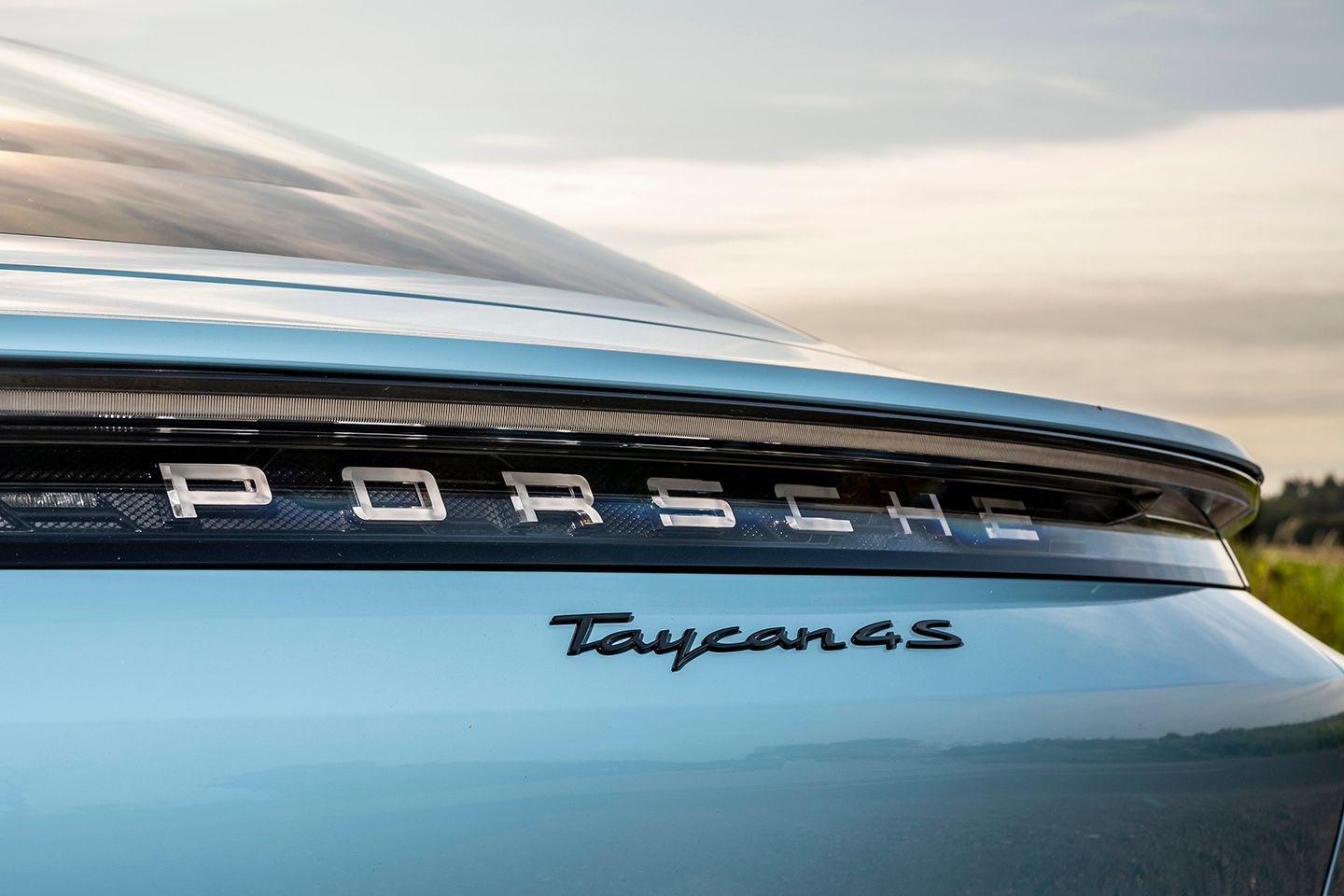
ENGINE & GEARBOX
On an internal combustion-engined Porsche, or any modern IC car come to that, 50,000 miles on the clock wouldn’t be an obstacle to purchase, but it’s different with EVs. Total failure of an entire IC engine to write-off level is rare these days but we do expect individual ICE components to fail, and some of these will be expensive to replace. Generally speaking, however IC motorists are happy (sort of) to follow that piecemeal parts replacement process in order to keep the vehicle on the road while refreshing the mechanicals to something as close to standard trim as possible.
It’s different on EVs. In September 2023 a 2020 Taycan 4S with 50,000+ motorway miles on the clock was advertised in the UK at just under £57,000. It had had a new battery pack installed in 2023, under Porsche warranty. That work was priced at £55,000. Yep, £55,000. Now, you could point to similar or even larger bills incurred by expensive IC cars needing new engines, but those would usually only be required as a result of a catastrophic and unexpected event. The thing about battery pack failure is that it is inescapable, predictable, and as we can see here, not cheap to put right.
Theoretically, it should be possible to replace failed battery modules, but as things stand at this relatively early stage in EV history, mainline dealers don’t yet have the tools or skills to do that. They, or rather a small number of external specialists, will simply replace the entire pack. That’s seen as easier and safer than splitting the existing pack open and hoping that you’ll manage to re-seal it properly when the work is done. There aren’t too many independent battery specialists around to help you avoid OPC service costs; Cleevely Electric Vehicles is one of a very small number of UK outfits operating in this area.
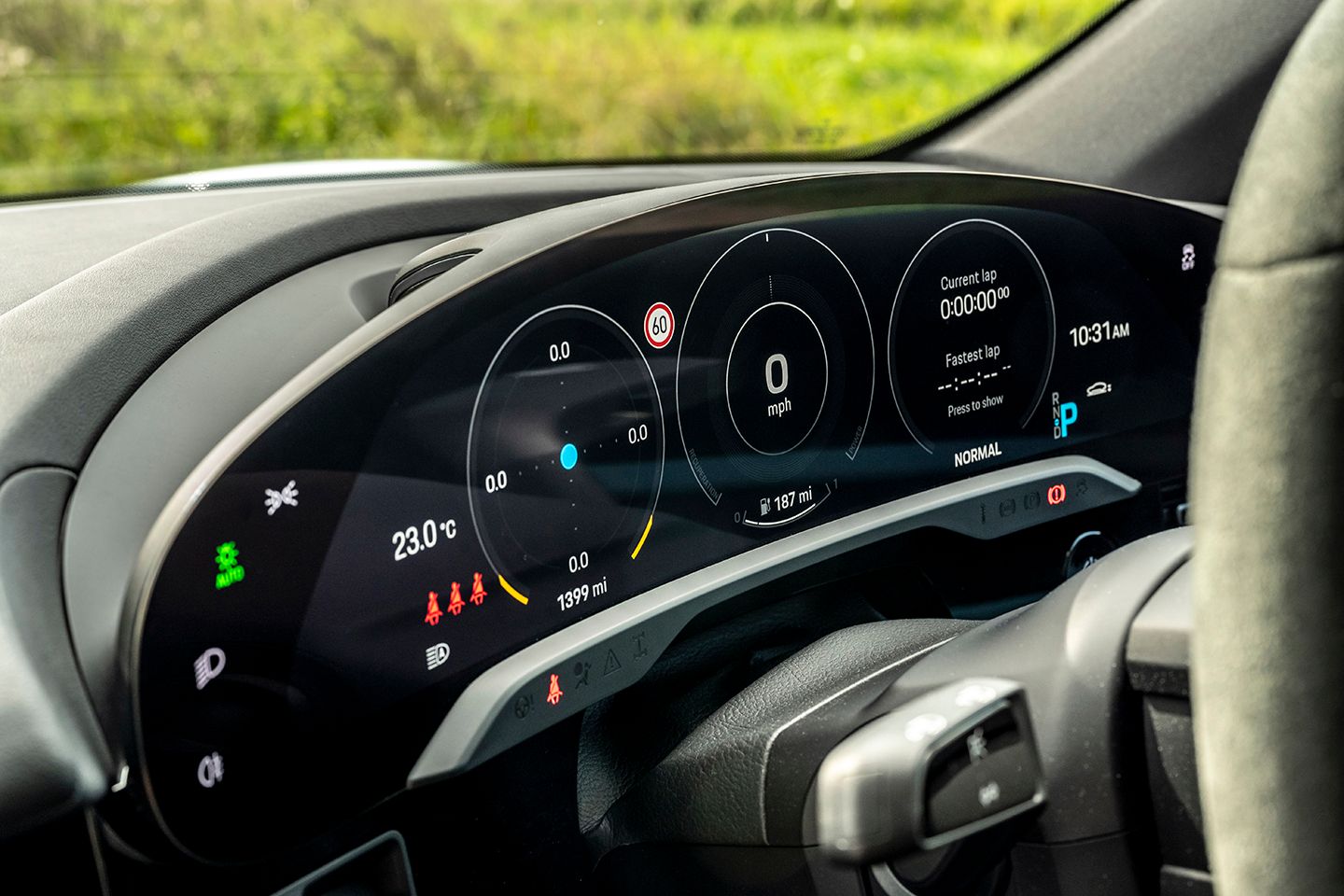
There’s a whole separate story to be written on this, but getting back to the purpose of this guide, the big questions for the used Taycan buyer, at the moment at least, will be how long will a battery pack last, and am I likely to encounter any other problems with my car? As regards pack life, EV manufacturers apply separate warranties to their main batteries. In Porsche’s case, the Taycan came with an eight-year/100,000-mile warranty which guaranteed that it wouldn’t drop below 70 per cent of original capacity in that period. We’ll have more on other Taycan problems as we go along. For now, here’s a bit more info on the drivetrain.
The Taycan and 4S had a single-deck 79.7kWh battery pack with the option of the 80kg heavier twin-deck 93.4kWh Performance Battery Plus that was standard in the Turbo and Turbo S versions. The rear motor in those range-toppers was quite a bit larger and heavier than that used in the lesser models.
Porsche’s 800-volt system meant fast charging. Once the Porsche Charging Service was activated, you could refuel your Taycan at more than 550,000 charging points across Europe, including both Porsche charging points and those of other providers. You could use the service for three years free of the basic charges and do fast charging with IONITY (part owned by Porsche) at the rate of £0.30 per kWh.
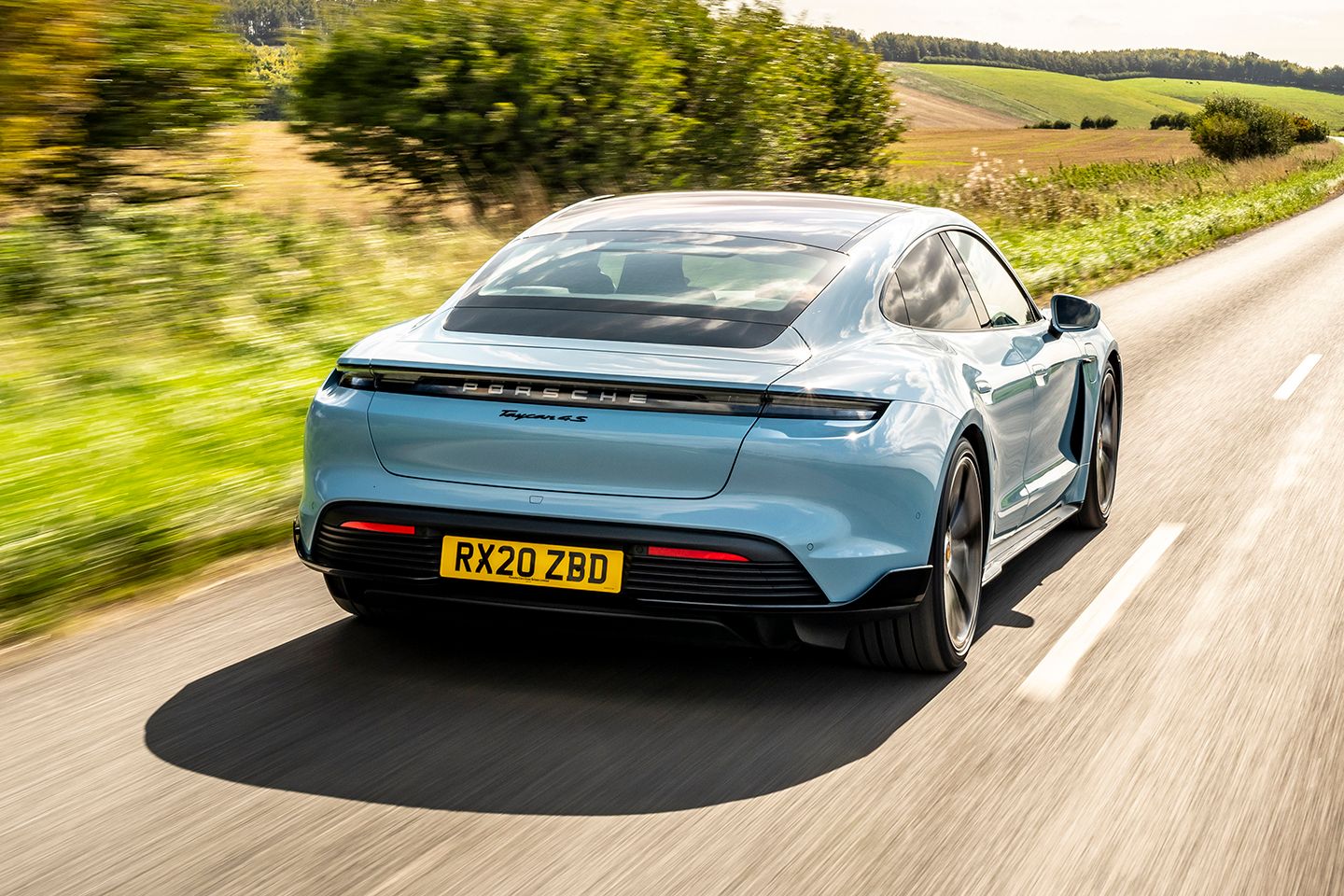
A 4S with the 93kWh Performance Battery Plus permitted a maximum charging rate of 270kW, compared to the 225kW rate for the 79kWh battery, theoretically letting you charge it from 10 per cent to 80 per cent in around 20 minutes. There aren’t too many 270kW-capable chargers in the UK though. On a more common 100kW charger that 10-80 charge will take about 40 minutes. Fully charging it from zero to 100 per cent on a 7kW home wallbox would take over 13 hours. Porsche recommended not allowing the battery to discharge below 20 per cent. In mid-2023, PH owners of big-battery Taycans were reporting real-world ranges of well over 200 miles, even through a British winter. In warmer climes, the number for 4Ss has been reported as comfortably over 250.
On the downside, owners have experienced sudden and unexplained (by the dealer) drops in their cars’ indicated ranges, and/or shutdown, and/or a red screen with a message to immediately stop the car in a safe place. The NHTSA in the US looked into this and concluded that it was caused by the conventional 12v battery running out of charge, shutting off the main 800v battery pack. Porsche isn’t the only manufacturer to have had problems in this area. Software updates were put out to fix it but some owners found that their range went down markedly afterwards. High voltage charging units have been replaced also.
Oddly for an EV you could feel the gearbox shifting between bottom and top. This could be particularly noticeable when coming to a stop. It’s been reported that some Taycan transmissions have arbitrarily shifted from drive to neutral, or from drive to park.
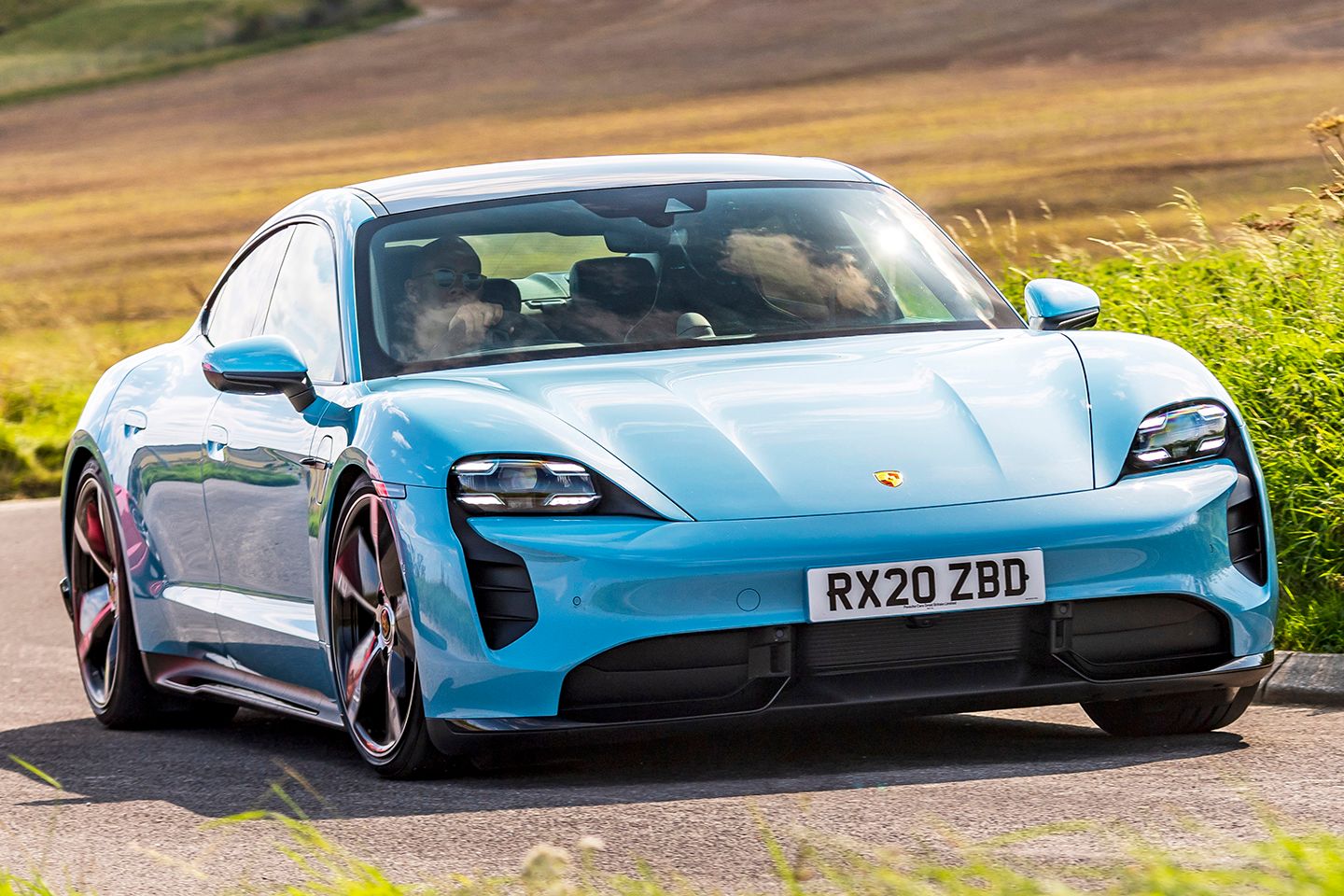
CHASSIS
Despite its high weight, the Taycan succeeded in incorporating enough Porsche chassis DNA to deliver an entirely marque-worthy driving experience. From behind the wheel, it is the most thoroughbred electric vehicle on the market.
Every Taycan had three-chamber adjustable suspension that could be tautened or slackened off to optimise the ride. In the softer settings, it was impressively compliant with no obvious detriment to the car’s composure or super-fast steering response. Even on max hardness it wasn’t punishing. A lift function was included.
19-inch five-spoke wheels were standard on the 4S, as were red brake calipers. Other wheel designs were available including swish-looking 21-inch forged alloy milled wheels with carbon aeroblades. Mission E style wheels and ceramic brakes were standard on the Turbo S. Porsche reckoned it didn’t really matter what brakes you had, carbon, steel or coated, because 90 per cent of everyday braking outside of a track was provided by drivetrain re-gen.
Some Taycans have suffered from serious inside shoulder wear on the rear tyres, which has usually been put down to incorrect alignment.
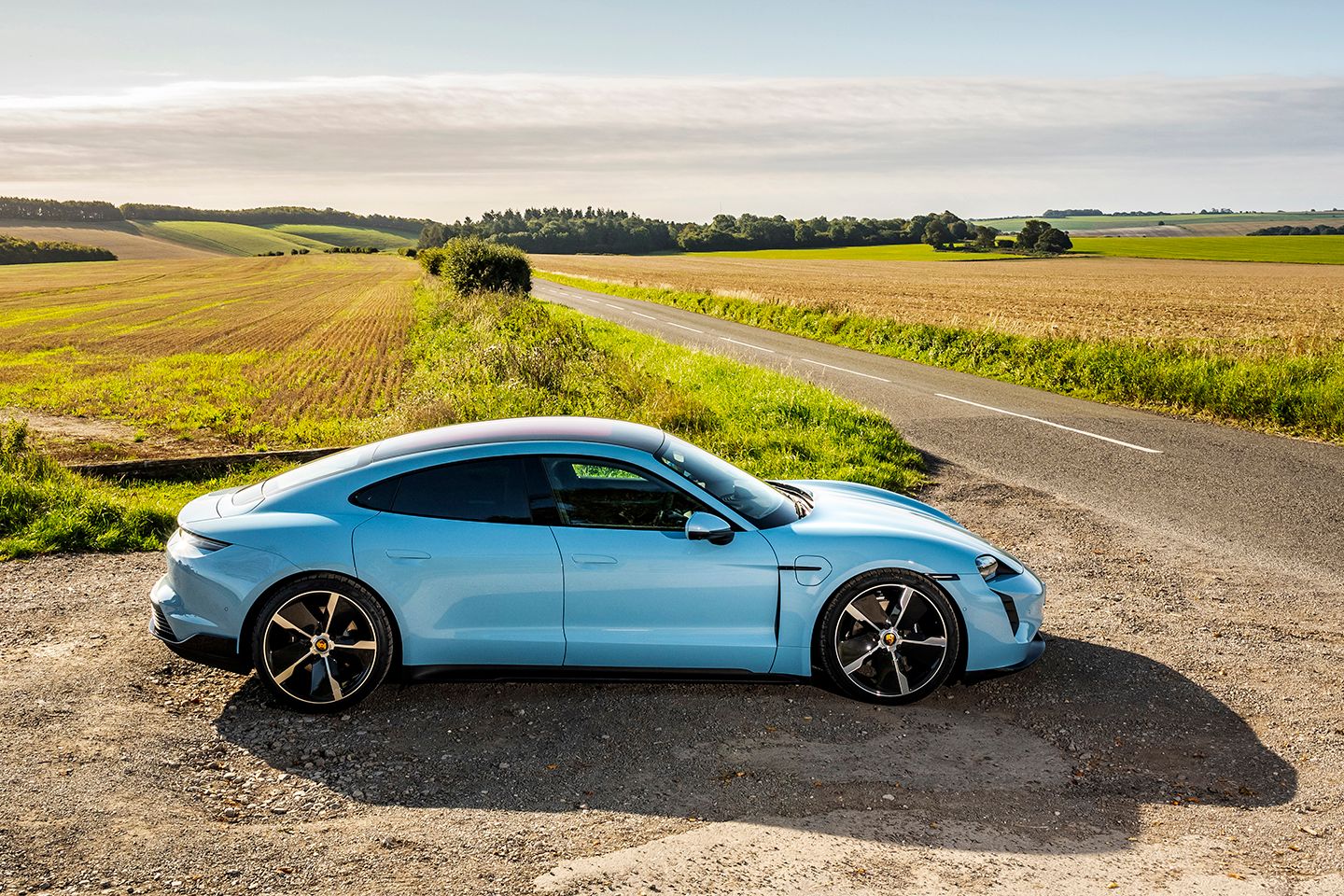
BODYWORK
The Taycan was shorter, lower and wider than the car it most resembled, the Panamera. Its structure was a mix of steel for the main passenger section and aluminium for the bonnet, bootlid, subframes and sills. A lot of effort was put into making the body as aerodynamically efficient as possible to help counter its weight. In Turbo form the Taycan was more than 300kg heavier than the equivalent Panamera.
The Taycan was a four-seater but four bods might struggle to get all their luggage into the 447 litres of luggage space, 366 of them in the back and 81 up front. That was more than a Golf would hold, but if it wasn’t enough you needed to be looking at a Sport Turismo or the handsome Cross Turismo.
The Taycan scored five stars on the Euro NCAP crash protection scale, although the whiplash rating wasn’t as good. There was a US-only recall to replace the front bumper structure (under the bodywork) on 2020MY cars because one of the welded joints wasn’t up to spec.

INTERIOR
The Taycan cabin was luxurious and beautifully put together, to a level that many might say was higher than that of the Mercedes EQS. In tune with the zeitgeist, the standard Taycan interior was leather-free, making it the first Porsche to eschew the moo, although you could of course option it to secure a noticeable uplift in the luxury ambience.
The very supportive electrically adjustable seats (eight-way as a default, but with more adjustment on the GTS or with the right option box ticked) were covered with a nice mix of textile and an Alcantara-lite microfibre called Race-Tex which was also used to wrap the steering wheel. A rotating knob on the wheel gave the driver access to Range, Normal, Sport, Sport Plus (which ramped up the artificial noise) or Individual driving modes. A bang-on driving position was easily attainable by the vast majority of humans.
A list of favoured add-ons for cars that didn’t have them fitted as standard would typically include a pano roof, 2+1 rear seating layout, torque vectoring, all-wheel steering, seat heating and Bose audio. Troubles with the air-con have afflicted quite a few Taycans. Cold weather has exposed an inability to generate enough cabin heat, noisy AC compressors have been replaced under warranty, and some systems have lost all their coolant as a result of incorrectly installed O-rings.
The infotainment hasn’t been problem-free either. The Porsche Communication Management screen could blank out, denying the driver access to the nav, climate control, audio, collision alert, lane change assist and reversing camera, and occasionally initiating unwanted alarms. The optional passenger display has been known to conk out. Software updates didn’t always resolve the PCM issue. A recall was announced in mid-2022 to try and sort it once and for all. Reversing cameras have been reported for playing up on their own account too, and some owners didn’t like what they saw as extreme fisheye distortion.
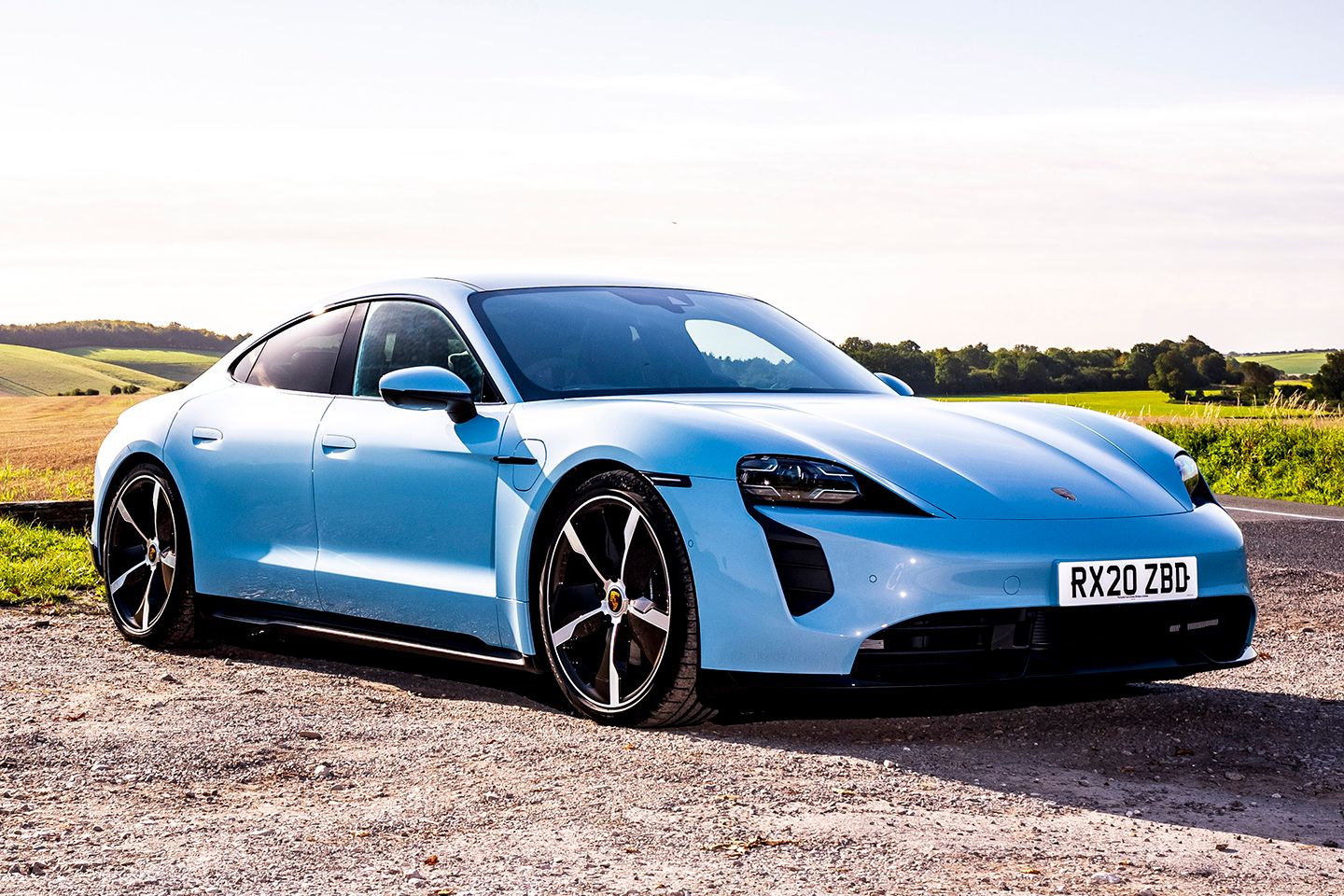
PH VERDICT
There are always risks involved with being an early adopter. You might very reasonably think that the Taycan is a superb vehicle. Nobody would argue with that in theory, but in practice there are a few glitches that could tarnish the ownership proposition, not just with the car itself but with the UK charging infrastructure.
For those who do biggish mileages, range anxiety is already being matched by charger anxiety. Porsche’s route planner is well-rated by owners for advising them of what’s available at charging stations, but what do you do if the charger isn’t working when you get to it? Will it be iced up in winter? If it isn’t, will there be a queue for it? Will you have to have a fight with someone to assert your rights? Is there an IC car stupidly parked in the charging space? Will there be a problem authorising your charging card? These are becoming common issues in the UK, though less so in Europe where fast chargers are relatively easy to find and waiting is not the norm.
Outside of that, a big UK reliability study carried out in 2023 put the Taycan dead last out of twenty EVs. Low scores in these surveys are often driven by high expectations, and Porsche has obviously set itself a very high bar in that respect. Even a short list of shortcomings can supercharge negative estimations when you’re expecting perfection, or something near to it, from a company with such a high and well-deserved reputation, so it’s important not to overstate the level of difficulties you might experience.
It’s worth noting, though, that there are a limited number of Taycan-qualified technicians in the Porsche network, so you might find yourself waiting a while for any work that does need to be done. Of course, this early in the electric vehicle story, reliability and long-term value are considerations that anyone in this market will have to weigh up, not just when debating the purchase of a Porsche Taycan but any EV.
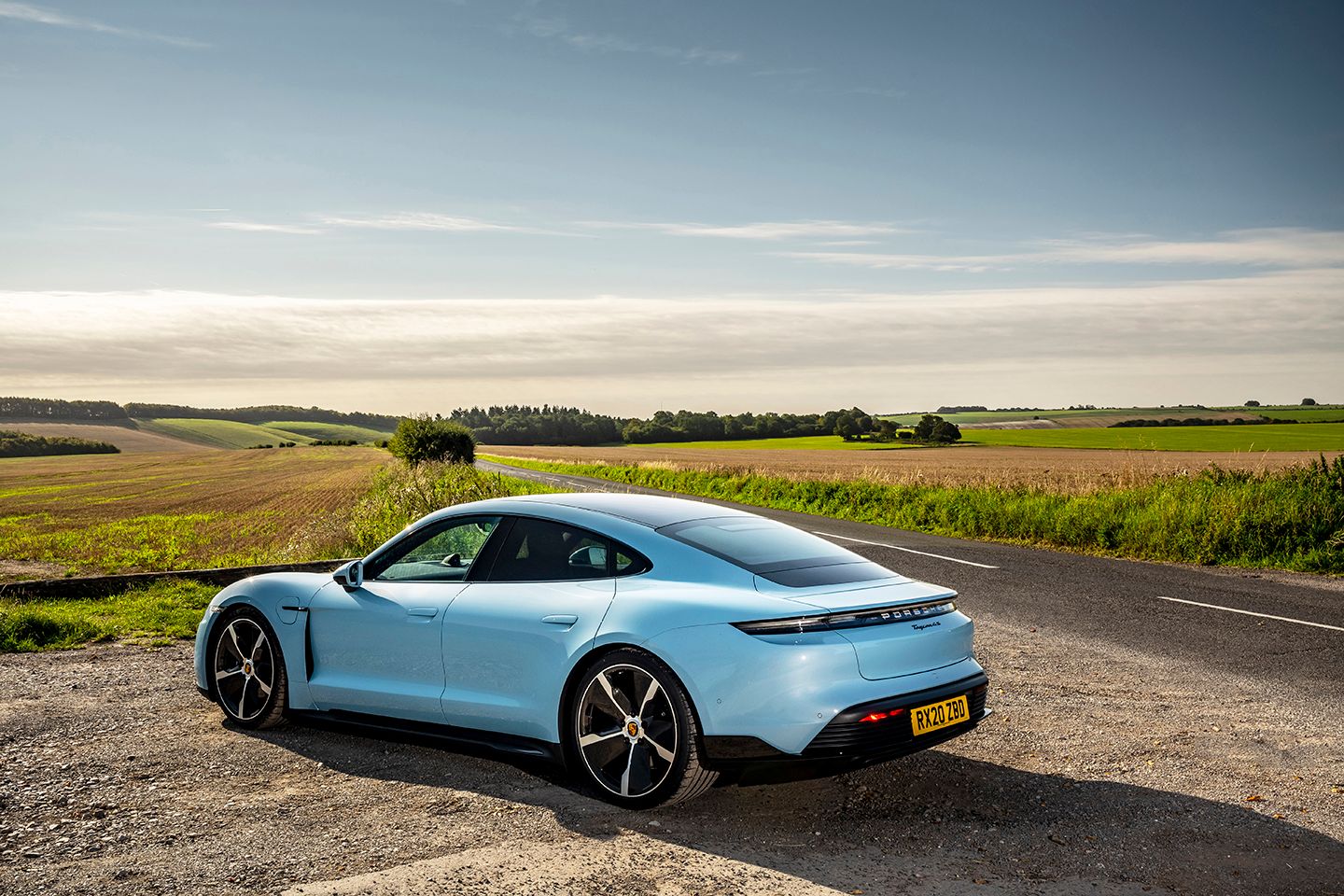
Once you’ve decided that yes, you would like to take a punt on a Taycan going down the approved used route might be a sensible approach. Approved used cars on OPC forecourts seem to be regularly re-priced downwards until they sell. Why is that? Well, depreciation has hammered all Taycans, just as it has hammered many other EVs, with top-spec models like the Turbo and Turbo S being especially hard-hit. To some extent, Taycans have been a victim of their own sales success. Reliability worries and huge insurance premiums that have been quoted for some owners haven’t helped its cause either.
In terms of what model to get, you don’t need to go straight to the GTS which is the usual no-brainer choice for IC-engined Porsches. The basic model or the 4S with the regular non-Plus battery will be more than sufficient for your needs, especially if you’re going to be doing mainly urban driving. You’ll feel the benefit of the extra lightness and, like all Taycans, it will still be an amazing daily drive, which is perhaps more important in the general scheme of things than worries about depreciation and the like.
In terms of rivals, the Mercedes EQS goes quite a bit further on a full charge and has been doing better on reliability surveys, but it doesn’t offer the same driving pleasure or the same aura of quality as the Porsche. Used EQSs cost on average around £10,000 more than used Taycans.
Of the 400-plus Taycans on PH Classifieds in January 2024, the cheapest was this 50,000-mile ’20 big-batteried 4S at £51,000. For another couple of hundred pounds you could chop 17,000 miles off that in this regular-sized battery 33,000-mile 4S at £51,232. Throw another couple of grand into the pot and you’ll be halving that mileage in this Carmine Red example with full red leather.

Laura Adams is a tech enthusiast residing in the UK. Her articles cover the latest technological innovations, from AI to consumer gadgets, providing readers with a glimpse into the future of technology.







